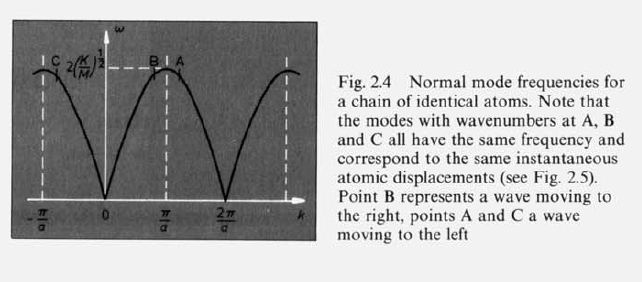Solution to Set 5: Difference between revisions
| Line 18: | Line 18: | ||
==Problem 2== | ==Problem 2== | ||
Determine the speed of sound for this chain. What is the lowest frequency of long-wavelength sound corresponding to the optical branch? | Determine the speed of sound for this chain. What is the lowest frequency of long-wavelength sound corresponding to the optical branch? | ||
From my lecture notes: | |||
<math>\omega _{\alpha }(k)\approx C_{\alpha } k \;</math> | |||
where | |||
<math> C_{\alpha } </math> = speed of sound | |||
==Problem 3== | ==Problem 3== | ||
Revision as of 03:48, 2 March 2009
Let's help each other, considering the importance of this HW, and get started on the solution to this thing
Diatomic harmonic chain
Problem 1
Given:
- a chain of atoms
- with alternating masses and
- connected with elastic springs with constant
- moving only in the x-direction
Derive the dispersion relation for this chain, with the index corresponding to the acoustic and the optical branch, respectively.
Problem 2
Determine the speed of sound for this chain. What is the lowest frequency of long-wavelength sound corresponding to the optical branch?
From my lecture notes:
where = speed of sound
Problem 3
Sketch the motion of the atoms corresponding to the edge of the Brillouin zone, both for the optical and the acoustic branch.
Problem 4
Determine the Debye temperature for this system, and determine the form of the specific heat in the limits of high and low temperatures.
Problem 5
Consider low temperatures () and determine the wavelength of the most abundant phonons (Hint: note the analogy with Wien's Law!)











